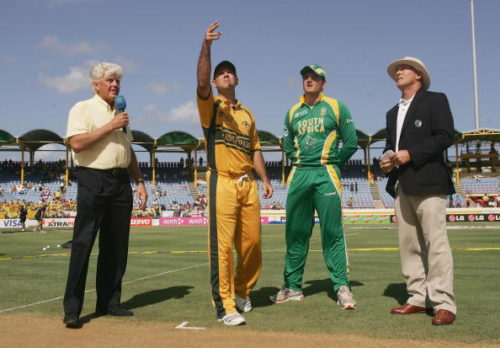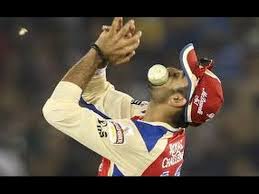
Category: cricket
Tim Southee, Mike Hesson and the Sunk Cost Fallacy

A sunk cost is an economic concept that refers to an expense that has been already paid for, so that this expense is irrecoverable. It sounds unremarkable, but sunk costs do funny things to the human brain. The Sunk Cost Fallacy, and a little game theory, may help explain why Mike Hesson refuses to make the hard call and drop Tim Southee for Matt Henry in the Black Caps ODI playing XI.
The Sunk Cost Fallacy is an example of a reasoning error that is commonly made when sunk costs are involved. It refers to when people do something irrational because they have sunk costs (in the form of money, time or energy) into a line of reasoning already.
The common example given is the Concorde project, during which the French and British governments realised that the project would never make economic sense, but which they continued with anyway on the grounds that they didn’t want to waste their sunk cost.
This is a well-known phenomenon in economics because it often leads to horrific waste, particularly when people throw good money after bad in the hope that their initial investment will be recouped (it’s also a well-known phenomenon in poker when players go broke). As far as Mike Hesson is concerned, the same psychological process may be occurring with his obstinate refusal to elevate Matt Henry to the opening bowler’s position alongside Trent Boult.
Southee is only 29 years old, but he has been playing for ages. He debuted as a teenager, and looked incredibly promising with a five-wicket haul and a run-a-ball 77 in a Test against England. Since then, New Zealand Cricket have invested substantial resources in him, giving him every opportunity to take the new ball against all comers. No less an authority than Allen Donald touted Southee as potentially a great swing bowler, but it’s hard to deny the raw numbers.
The numbers argue confidently that Southee is not as good as Henry (in ODIs at least), and probably never has been.
Since the loss to Australia in the final of the 2015 Cricket World Cup, Southee has averaged 42.77 with the ball. He has taken 45 wickets in this time frame at an economy rate of 5.72. Henry has taken 44 wickets at an economy rate of 5.81, which is similar, but has an average of 28.13 thanks to a strike rate of 29.
This is, amazingly, a better strike rate than Shane Bond managed over his career (29.2), and means that Henry has been 50% more likely to take a wicket on any given ball than Southee during this time.
Southee is striking at 44.8 since the last Cricket World Cup, and has not taken four wickets in an innings since then, despite playing in 38 games. Henry has only played in 25 matches since the final loss but has already managed three four-wicket bags and one five-wicket bag in that time – only one of each fewer than Southee has managed in a 132-match career.
In fact, Southee has not managed to get four wickets in an innings one time in the last three years, whereas Henry took four wickets in his last match.
Mike Hesson might be thinking here in terms of potential, in that, theoretically, Southee has the potential to be another Jimmy Anderson. Like Southee, Anderson is also tall, bowls with an open stance and relies on swinging the ball to nick batsmen out. Also like Southee, the Englishman didn’t achieve anything particularly special in his first 132 ODIs, returning an average of 30.18 for his 179 wickets.
But in 43 matches since the start of 2012, Anderson has taken 65 wickets at an average of 23.97. Hesson might be expecting a similar transformation to come over Southee, but it’s also very possible that he has invested so much time and energy in Southee that he sees this investment as a sunk cost that he is compelled to recoup.
A solution that would save everyone’s face would be to demote Southee to third seamer. This would be the best of all worlds for everyone except for Lockie Ferguson, who would then struggle for a starting berth.
The positives are that it would allow Boult and Henry, with the best strike rates, to bowl with the new ball when they are the most effective, and it would allow Southee to utilise his skill set of varied deliveries at the death while minimising his weaknesses of being slow and inaccurate. Southee also has 33 wickets as third seamer, averaging an entirely acceptable 28.18 (compared to over 35 while opening). It seems like a solution whose time has come.
*
If you enjoyed reading this essay, you can get a compilation of the Best VJMP Essays and Articles of 2017 from Amazon for Kindle or Amazon for CreateSpace (for international readers), or TradeMe (for Kiwis).
How To Fix All of Cricket’s Problems At Once: Introducing the T0 (T-Zero) Format

T20s were invented to fill a specific niche in the cricket market. It was believed by some great, visionary minds that cricket fans were turning away from ODIs because of the “boring” middle overs between ten and 40. Apparently these 30 overs had too many balls that resulted in neither a wicket nor a boundary, causing viewers to switch off from a lack of action. This essay proposes that we reduce limited overs cricket by a further 20 overs.
There have been experiments with reducing cricket matches to less than 20 overs, such as the recent T10 tournament in Sharjah. Some brave souls have talked about T5 cricket, but what is being proposed here is the advent of zero-over cricket, hereby dubbed the T0 (pronounced “tee-zero”) format. It’s technically a form of limited-overs cricket in the sense that overs are, indeed, acutely limited.
Many people say that Tests are boring because the result is often a foregone conclusion. Over five days, it’s as likely as anything ever is in sport that the most skilled side wins. This contrasts sharply with soccer, and with T20 cricket, because these sports have a much greater luck component. This luck component means that weaker teams can upset stronger ones more often, making for a much more engaging spectacle.
Why not maximise the thrill of potential upsets by deciding the match at the coin toss?
Purists will likely dismiss the idea at this stage, pointing out that reducing the contest to zero overs also reduces the batting, bowling and fielding components of the game. While this is a fair criticism, it needs to be balanced against the fact that the boring aspects of the game would also be reduced. T0 cricket completely does away with the notion that the players are just going through the motions; every moment of every game would be crucial to the outcome.
In all, there are at least three major reasons to support the expansion of T0 cricket. Each of these reasons solves a major problem with the current state of the longer formats of world cricket.
One of the foremost is that it would enable cricket to be expanded into markets where people have not been able to play because of the expense. Cricket is a fairly expensive sport to play, especially when compared to rugby or soccer, and this puts an upper limit on its market appeal to the poorer demographics of the world. Many interested people just don’t have the spare cash for several bats, balls, a set of pads, box, helmet, thighguard etc.
In T0 cricket teams don’t need anywhere near as much equipment as they need in the longer formats – for some players a uniform would suffice. Moreover, maintenance of that equipment is also reduced to a minimum on account of being used less often than in the longer formats of the game. Limiting the equipment factor will also have the effect of reducing gear envy among teammates.
The effect on wear and tear on the players’ bodies is another problem solved by T0 cricket. England head coach Trevor Bayliss was in the news recently for saying that T20 internationals should be dropped from the schedule to help with player burnout. Bayliss contends that the cricket schedule is so jam-packed nowadays there is no time for players to rest.
T0 cricket takes away the physical exhaustion factor. By minimising the incidence rate of high-risk physical exertions, T0 cricket also minimises the chances of injury or burnout. Also, with awareness growing about the long-term dangers of concussions, mothers of young keen-on-cricket children will be relieved to hear that T0 cricket offers very little risk of players getting hit in the head by a hard, rapidly moving ball. The biggest risk is getting a coin in the eye.
Modern life has a peculiar obsession with equalising conduct between the sexes, and T0 cricket can proudly claim to have solved the gender problem. At the moment, men and women can’t really play cricket together because of the fact that men are much taller and stronger, which provides immense advantages when it comes to bowling a ball fast or swinging a bat hard. The differences are so vast that leagues currently have to be separated by gender.
Many would argue that these gender differences, like the personal differences in height and muscle mass, make the game of cricket inherently unfair. Instead of everyone having a reasonable expectation of being able to pull off a win, the longer forms of cricket reduce batting to a mere contest of strength, timing and hand-eye co-ordination, and bowling to a simple process of repeating a single action with maximum shoulder leverage.
T0 cricket would provide a truly level playing field, as all players would be limited to their own ability to pick which side the coin was going to land on – a tricky skill to master even for the most dedicated or gifted athlete.
In summary, there are a number of reasons to think that this revolutionary proposal could rejuvenate the public’s appreciation for the sport. T0 cricket offers the perfect solution for busy people in our modern world who don’t have copious amounts of time to set aside to watch a match, and is surely the future of our beloved game.
*
If you enjoyed reading this essay, you can get a compilation of the Best VJMP Essays and Articles of 2017 from Amazon for Kindle or Amazon for CreateSpace (for international readers), or TradeMe (for Kiwis).
Will We Ever See Tactically Dropped Catches in T20?

There is a nightmare scenario lurking in the future shadows of T20 cricket. It’s unexplored territory that arguably goes against the spirit of the game, like the underarm delivery or the Mankad. The possibility of it is so unpalatable that few have thus far dared think about it. The nightmare scenario is this: Will we ever see a T20 match in which a fielder deliberately drops a catch?
The reason why this might become an issue is because of scoreboard pressure. Considering the following scenario:
It is the second innings. The team batting first scored 200, and in response, the chasing team is 141/1 after 15 overs. This means that the chasing team needs 60 runs off 30 balls, a RRR of 12 per over. This is a challenging task but not ungettable. The No. 3 batsman is in, but has struggled to get the ball out of the middle all day and is striking at less than 100. The Nos. 4, 5, 6 and 7 batsmen are all established hitters who reliably strike at 125+. The No. 3 batsman has just hit the first ball of the 16th over in the air towards mid-on, who is lining it up.
The question: Is it in the interests of the fielding team for the mid-on fielder to complete the catch, or is it better for him to deliberately palm the ball into the ground?
Consider the match situation. The chasing team needs 60 runs off 30 balls, which essentially means that they have to score boundaries. The No. 3 batsman has had trouble hitting boundaries all innings, which means that the chasing team has a fair probability of losing if he remains at the wicket, because he will use up deliveries that the Nos. 4, 5, 6 and 7 batsmen could be using to strike boundaries.
If he gets out now, on the other hand, those batsmen will be able to come in and strike at a higher rate, meaning that the chasing team would have a much higher chance of winning the match.
In simpler terms, what happens when the wicket count is meaningless on account of there being so few overs left and the current striker has a lower strike rate than the next man in (or, at least, the fielding team anticipates that he will have a lower strike rate)?
Against this, it might be argued that a set batsman will have his eye in better than the next batsman in, and so taking the catch will always benefit the fielding team. Moreover, taking the catch makes it more likely that the bowlers can get into the tail.
But that doesn’t negate the possibility, however unlikely, that a match situation may arise in which the fielding team calculates that the match is unwinnable for the chasing team while a certain batsman is at the crease on account of the intensity of the scoreboard pressure.
What may happen in the end is that batsmen are simply sent to the crease in descending order of strike rate.
*
If you enjoyed reading this essay, you can get a compilation of the Best VJMP Essays and Articles of 2017 from Amazon for Kindle or Amazon for CreateSpace (for international readers), or TradeMe (for Kiwis).
